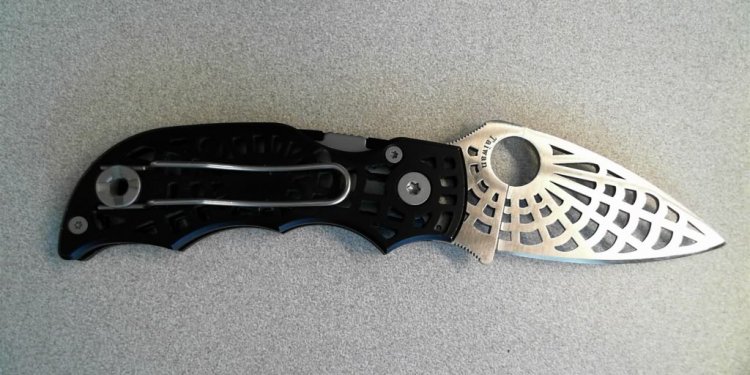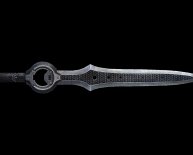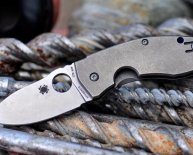
Spyderco Web blade
Way “back in the day” I picked up my first Spyderco knife – an Endura. Through my years wearing a uniform on the street I carried many a different lockblade folding knife and the assortment included other variations on that basic Endura design. Spyderco knives all have that trademark thumbhole and most of the ones I’ve owned have the plastic/synthetic grips I’ve grown accustomed to. The early variants had a molded plastic pocket clip but that has changed to steel across the years. Recently I received Spyderco’s Manix 2 to field test and I’ve come away quite pleased.
Specifically this is the Manix 2 Lightweight folding knife. Its evolution traces back to the original Spyderco Manix released in 2004. In 2006 the full-sized C95 Manix spun off a smaller version call the C101 which was essentially the full size Manix shrunk to a handier size package.
The original Manix 2 featured full stainless steel liners, G-10 handle scales and used Spyderco’s proprietary Ball Bearing lock mechanism (see more on this below). The next generation of Manix 2 (this one) saw the handle slabs changed to fiberglass-reinforced co-polymer (FRCP), a lightweight polymer used as the base for the handles with a steel insert to support the lock mechanism.
Those lighter weight black handle slabs were put on either side of a flat-ground CTS BD1 stainless steel blade with a leaf shaped profile. (Handle is available in blue on the C101BL2 model.) When locked open, the spine of the blade and the curve of the choil line up perfectly to flow into the shape of the grips. The grips themselves are ergonomically shaped to fit a medium sized hand and where the friction ridges stop on the spine of the blade, there are friction ridges molded into the grips so you can index placement of your thumb if you have to press into cuts.
The Manix 2 has a three-inch plain cutting edge on a blade that is 3.37” overall and does not have any option for a partially- or all-serrated edge. Closed the knife measures 4.66” and locked open it’s just over 8”. The blade thickness is 1/8” (0.125”) and the knife weighs 3 ounces (from published material. I don’t have a scale that precise).
The knife uses a wire clip to help reduce the weight even further and it is reversible so you can set the knife up for right or left pocket carry. You cannot, however, put the clip on the pivot end of the handles, so the knife is best suited for below-waist carry.
Now I could try to explain the Ball Bearing locking mechanism but it’s easier to let Spyderco do it. Here is their explanation directly from their site:
Linking the blade and handle is Spyderco’s patented Ball Bearing Lock mechanism. This high-strength lock consists of a ball bearing nested within a durable textured polymer “cage.” When the blade is opened, a spring-loaded steel plunger drives the ball bearing forward to wedge between a ramp on the blade and an “anvil” in the handle’s steel insert. Drawing the caged ball bearing to the rear releases the lock and allows the blade to close smoothly while keeping your fingers safely away from the sharp edge. Smooth, strong, and easily operated, like the rest of the knife’s features, the Ball Bearing Lock is also completely ambidextrous.


















